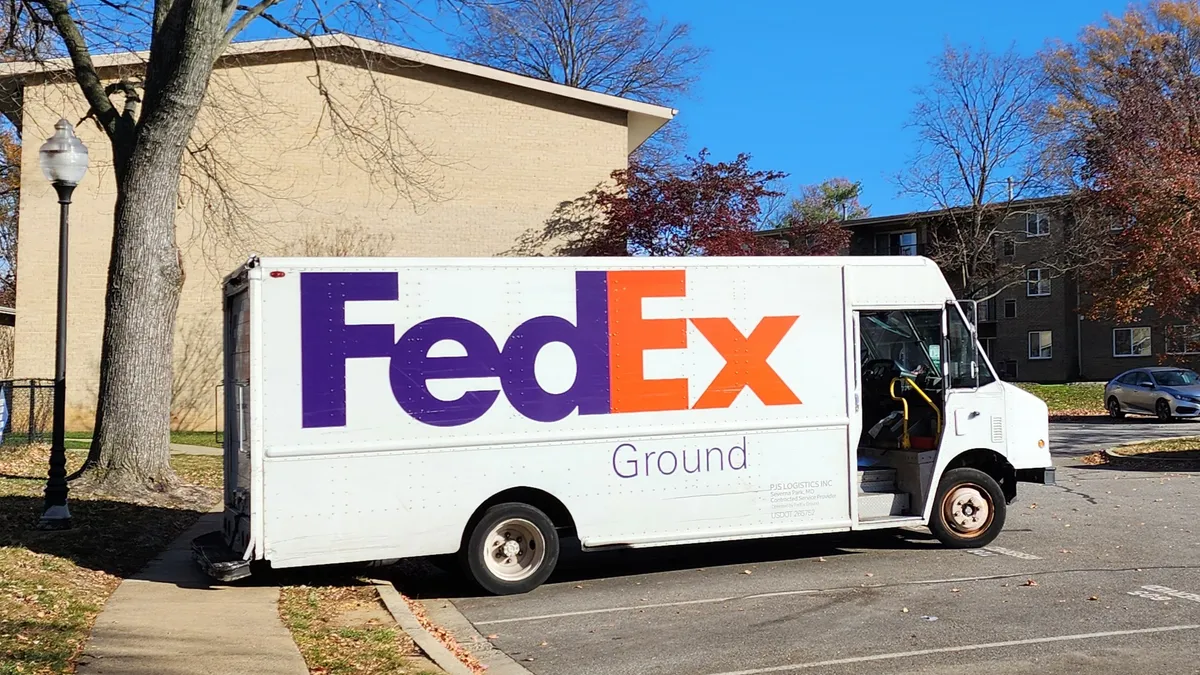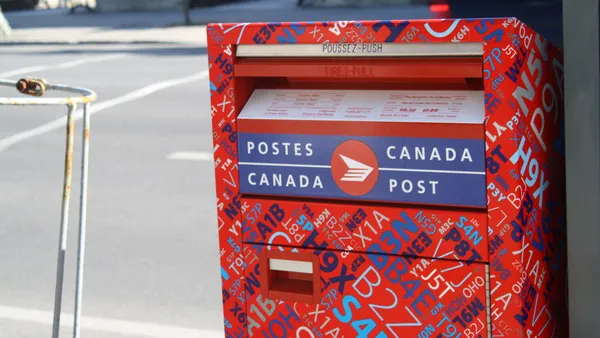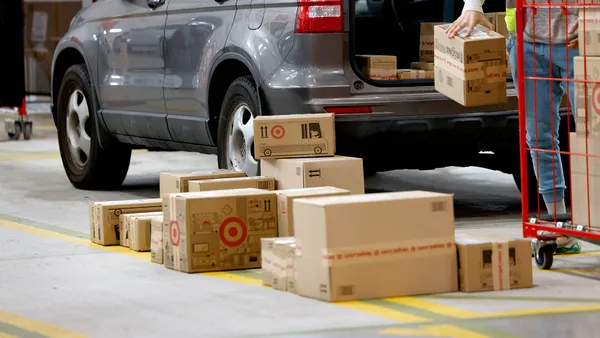Dive Brief:
- National carriers like FedEx and UPS grabbed a larger share of volume from regional delivery providers on the busy shipping week of Black Friday than last year, according to emailed data from Shipium.
- From Nov. 20 to Nov. 26, 49% of volume on the multi-carrier shipping platform went to national carriers, with the remainder being handled by regionals. National carriers’ share jumped from the same period in 2022, when they handled just 31% of volume on the platform.
- Co-founder and CEO Jason Murray acknowledged that volume share on Shipium doesn't necessarily mirror the parcel market at large, as regional carriers handle just a sliver of U.S. volumes overall. Still, he said the data underscores FedEx and UPS' efforts to compete more aggressively on price amid weaker demand.
Dive Insight:
National carriers grappled with capacity constraints during the COVID-19 pandemic's volume surge, leading many shippers to use smaller providers' services. But delivery demand has cooled off this year, and FedEx and UPS are offering up rate discounts to draw more volume into their networks.
"UPS and FedEx, what they're trying to do is just minimize unused capacity," Murray said.
ProShip also saw an uptick in the share of Black Friday volume handled by national carriers among the shippers using its software, albeit a much less pronounced jump than Shipium encountered.
"Singling Black Friday out, there is only a 2% increase in 2023 for percent shipped with national vs. non-national carriers," Taylor Pawelka, ProShip director of marketing, said in an email.
However, for the peak season overall, ProShip is seeing an almost identical national vs. regional split compared to last year, Pawelka added.
Even as national and regional carriers compete for market share, there have been plenty of holiday orders for each to deliver at the start of peak season. Online sales on Black Friday increased 7.5% from last year, while Cyber Monday sales jumped 9.6%, according to data from Adobe Analytics.
"Strong consumer spending this season has also been driven by net-new demand, not simply higher prices," Adobe Analytics said in a news release.
Demand was soft heading into the holidays compared to previous years, which made shippers uneasy, said Drew Taranto, DHL Supply Chain's senior director of e-commerce strategy, in an interview. But "the consumer showed up" once Black Friday hit, with DHL Supply Chain seeing year-over-year volume growth on that day.
"Our customer base, and obviously DHL, was very excited by what we've seen over the weekend," Taranto said. "It reminded us of the olden days, as they would say, in 2019 with the consumer really coming in hard on Black Friday and Cyber Monday."















